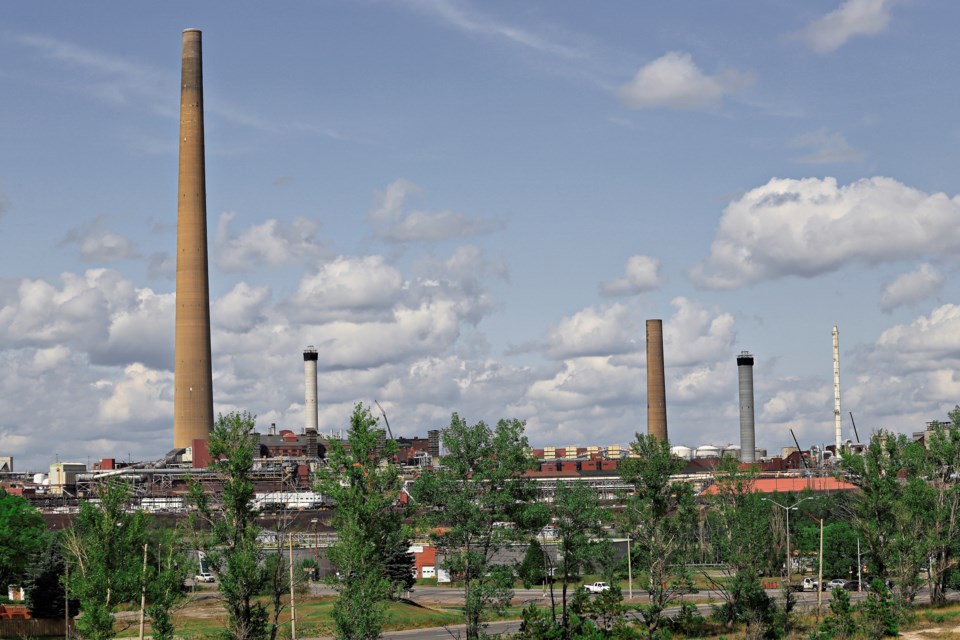With the news that Vale’s Superstack is no longer operational, the nickel giant is now poised to start the demolition process on the 50-year-old structure.
On July 28, the company announced it had decommissioned the 1,250-foot (381-metre) stack at its Copper Cliff Complex in Sudbury during a period of regular maintenance.
In the broader context, taking the stack out of service represents a landmark moment of the environmental progress for Vale (formerly INCO) and the mining industry as a whole.
During the maintenance shutdown, Vale said, it had finished tying in the flue system to two smaller, 450-foot (137-metre) stacks that had been erected in its place. Construction on those two structures was completed in 2019.
Before work can begin, there will be a two-month transition period, during which the stack will remain on standby as a backup.
That means keeping burners located at the bottom of the stack operational for an interim period, although it’s “unlikely” the company would go back to using the Superstack, explained Joe Costigan, manager at the smelter complex.
“As we get used to operating with our new system that we’ve recently completed, we’re going to keep the stack 'hot,'” Costigan said.
“So we’re going to keep those burners on until we prove out our current technology and then those burners will come off.”
Costigan said the burners use enough natural gas to run 18,000 homes a year, so “it’’s a significant reduction in greenhouse gas when we actually take those burners off.”
Once the transition period is complete, then the dismantling work will begin.
The first stage of disassembly is the removal of the inner steel liner from the stack, a process that could take a few years.
Costigan said Vale would take a “top-down” approach to its removal.
That means that, rather than using explosives or heavy machinery to topple the stack, it will be taken down piece by piece, work that requires a team of specialists to complete.
“Taking stacks down is common in the industry and there are people that specialize in it, so obviously we went to those,” said Costigan, noting that companies were vetted through a tendering process.
“There’s a number of specialist firms that we’ve reached out for it.”
Companies with expertise in the removal of industrial chimney stacks typically have experience, training and equipment that can handle challenges presented by working at heights or in confined spaces.
Costigan couldn’t say how much steel would be extracted from the stack or what would be done with it once removed.
Like the steel lining, the outer concrete portion of the stack will be taken down piece by piece.
The company hasn’t yet settled on a timeline for that stage of the work; however, Costigan confirmed it’s still the company’s plan to fully remove the stack at some point.
“There is some reason to take it down,” he said. “The concrete does erode over time and it does cost money to maintain, so obviously we’re trying to avoid the cost of fixing a stack that’s no longer in use.”
Decommissioning the stack marks another major leap forward in environmental sustainability for the company.
Vale first embarked on its $1-billion Clean AER (Atmospheric Emissions Reduction) Project in 2012, announcing its completion in 2018.
There were three core elements to that project: new converters in the smelter facility; a new wet gas cleaning plant; and a new secondary baghouse facility.
The new converters improve containment and capture the sulphur dioxide from the converting process in the smelter.
They send the captured SO2 to the new wet gas cleaning plant, while the new baghouse facility acts like a giant vacuum cleaner to reduce metals particulate emissions.
With the Superstack now decommissioned, the collective result of these projects will mean a drastic reduction in emissions and energy usage at the complex.
“So, 40 per cent particulate reduction, 40 per cent greenhouse gases with the smaller stacks and not requiring those big burners, and a dramatic reduction in SO2 (sulphur dioxide) emissions, by 85 per cent," Costigan said.
“We’re very proud,” he added. “It’s a big achievement, and it’s nice to get here.”
Costigan said Vale will start to see those savings in short order. The lowering of natural gas usage will take place over the next few months, while the reduction in particulate and SO2 emissions would take effect immediately.
